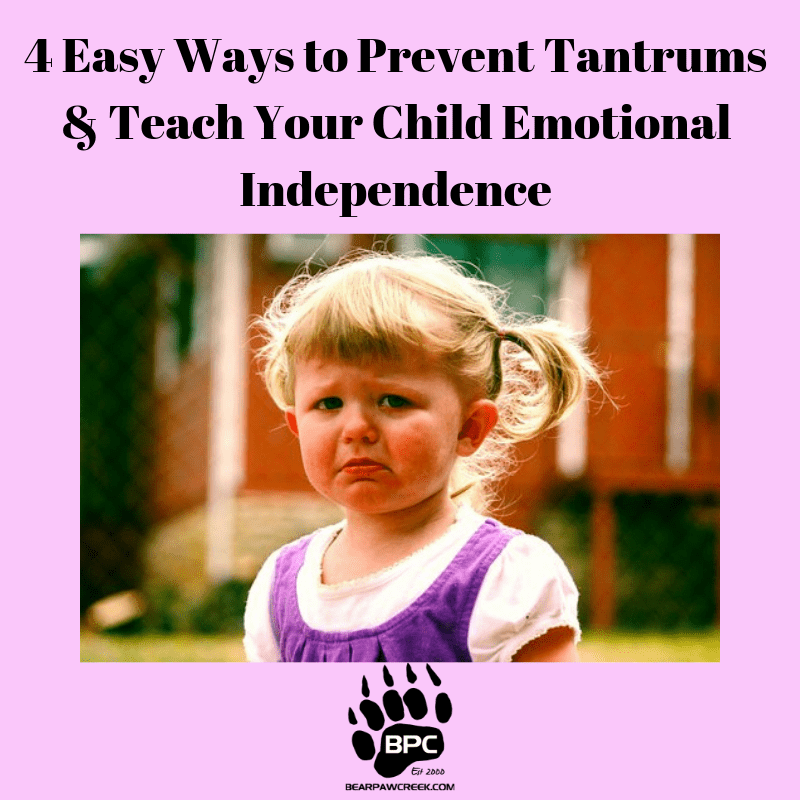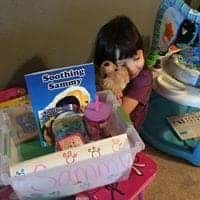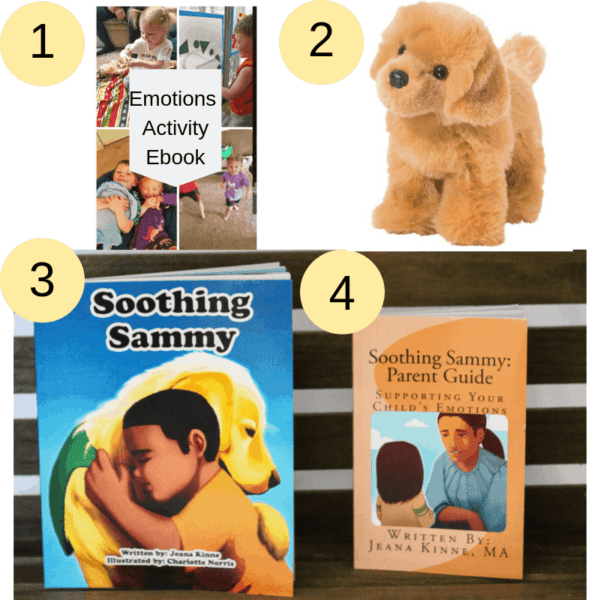4 Simple Ways to Teach Your Child How to Calm Down & Managing Their Emotions
Are you tired of turning on the news and being bombarded with stories about violence? Psychologists hope that if children learn how to manage their emotions at a young age, they will be able to respond more positively to stressful situations as adults. How are we supposed to teach our children how to cope with their feelings?
According to Robert Plutchick, professor emeritus at the Albert Einstein College of Medicine, more than 90 different emotions have been identified.
Wow! Imagine being a little person experiencing all of these feelings. How do we, as parents teach our children how to process these feelings when our children aren’t able to communicate what or why they are feeling that way?

How Does an Adult Calm Down When Upset
Close your eyes and think about something that made you mad or frustrated. How do you feel when you think about it? Does your heart start racing? Do your hands clench a little? Is your internal temperature rising?
Now, open your eyes! What do you do to calm down? Most people use sensory strategies to regroup – such as sipping coffee, chewing gum, going on a walk/run or smelling essential oils. How did you learn that this technique helps you calm down?
When your child gets upset or overwhelmed, they feel the same way inside. There body is “fuming” with emotion but they don’t know how to respond. Unfortunately, humans aren’t born knowing how to cope with strong emotions. We learn these skills through life experiences, but we don’t want our children to tantrum while they are learning.
Follow these simple 4 Steps to teach your child how to respond to their feelings.
When children feel their body start to “fume” they react. Reactions don’t involve thinking about why they feel the way they feel. This is why you see young children throwing objects (that they are frustrated with), hitting the toddler sitting next to them (because they are in their space) or running the other direction when mom says it’s time to leave the park.
What do you do in this situation? The initial response I hear from parent’s are: “I try to talk to them, but they won’t listen to me.” This approach doesn’t work often because your child is feeling overwhelmed and are not ready to talk. Instead, give them time to process their feelings and provide them with ways they can calm down independently. Once calm, they will be ready to have a conversation with you.
How is my child supposed to calm down on their own without me talking to them?
After spending over 15 years working with children, I couldn’t find anything written for children that teaches these skills in a practical, hands-on way. This is why I created the “Soothing Sammy Set.” Soothing Sammy teaches children how to process their feelings, identify their emotions and problem solve in a way that is EASY for children to understand and SIMPLE for parents to implement!

4 Simple Ways to Teach Your Child How to Calm Down & Managing Their Emotions Share on X
This Four- Step Set includes:
1. Children’s Book – The colorful photos and simple story is perfect for toddlers, preschoolers and elementary aged children. When a young boy becomes upset, he visits Sammy (the golden retriever)’s house. Sammy shows him, and his friends, how to use their sensory system to calm down. He gives each child a typical household item (such as a cup of juice (taste), a cold washcloth (touch), a family picture (see) and many other items) that helps them feel better quickly. Once calm, Sammy helps the children problem solve by asking them questions.
2. Soothing Sammy Plush Dog (Golden Retriever) – Using an empty box or container, follow the directions in the back of the book to construct a “Sammy house” for this plush dog (resembling the house in the children’s book). Place Sammy, a machine washable plush dog, into his new home and fill it with household items discussed in the children’s book. When your child feels upset, redirect them to the Sammy house to calm down (just like the children in the book did).
3) Parent Guide – This 80-page book explains how to prevent children from becoming frustrated in everyday situations (such as transition times, sharing space and toys, listening and following directions, going on a long car ride, etc.) This book contains activities, instructions and parent reflection sections.
4) Emotions & Feelings Activities E-Book – These 10 play-based activities teach children how to identify feelings in themselves and others, supporting emotional competency. Using items typically found around a home, children engage in hands-on learning activities that teach emotion vocabulary and simple ways to respond to others when they are feeling overwhelmed.
The children’s book, along with Sammy the plush dog, activity e-book and parent guide, creates a complementary set of tools that supports your child’s emotional development. Sammy’s techniques give children the confidence to manage their emotions.
What our families have said:
“Parenting is hard work! Children do not come with instructions, so knowing how to handle their emotional needs is so hard. Thanks to Soothing Sammy I am better equipped to help my children through their melt-downs and tantrums. Since grabbing this set I have seen not only a difference in my children but a difference in how I handle them in the hard moments. I definitely recommend this set to every parent.” – Stephanie
“My daughter and I had fun reading and building Sammy’s house. She loves Sammy! So far it has helped her feel better when upset. She has chosen something to crunch on when mad and then hugging Sammy when sad. We keep it i the living room where she will hopefully continue to use it.” – Jennifer


